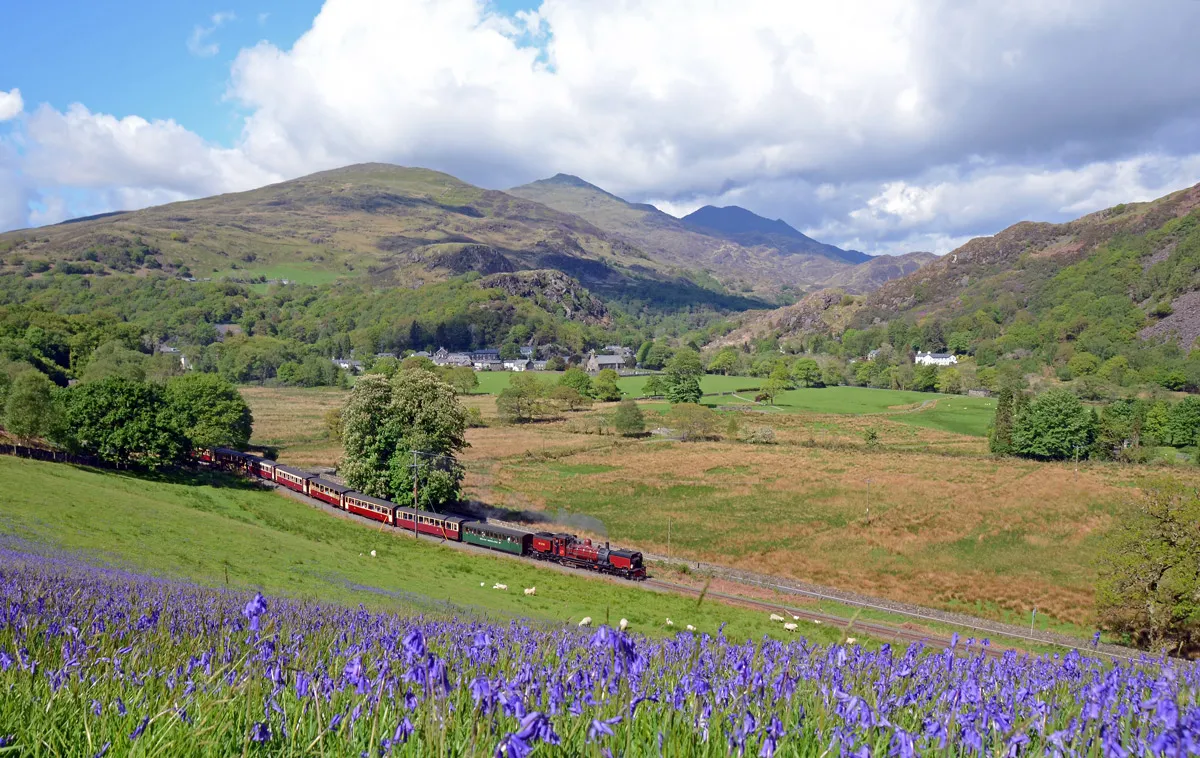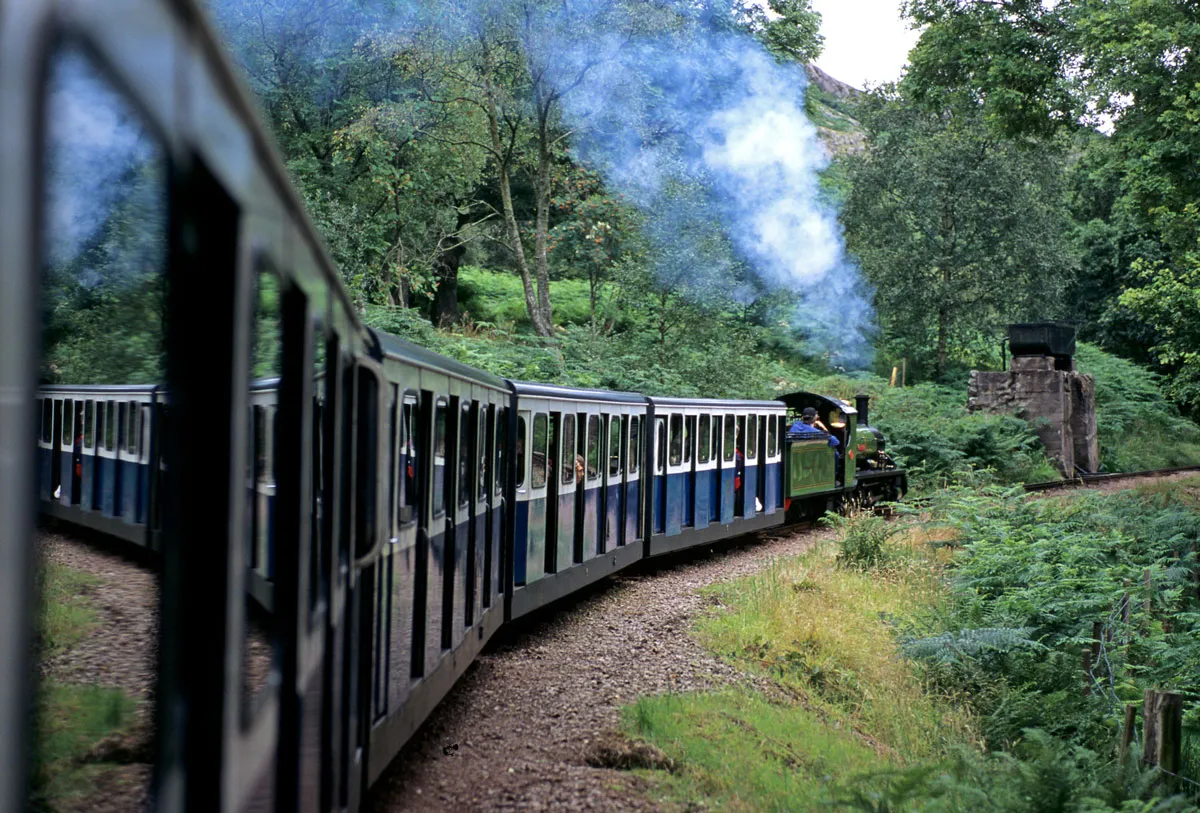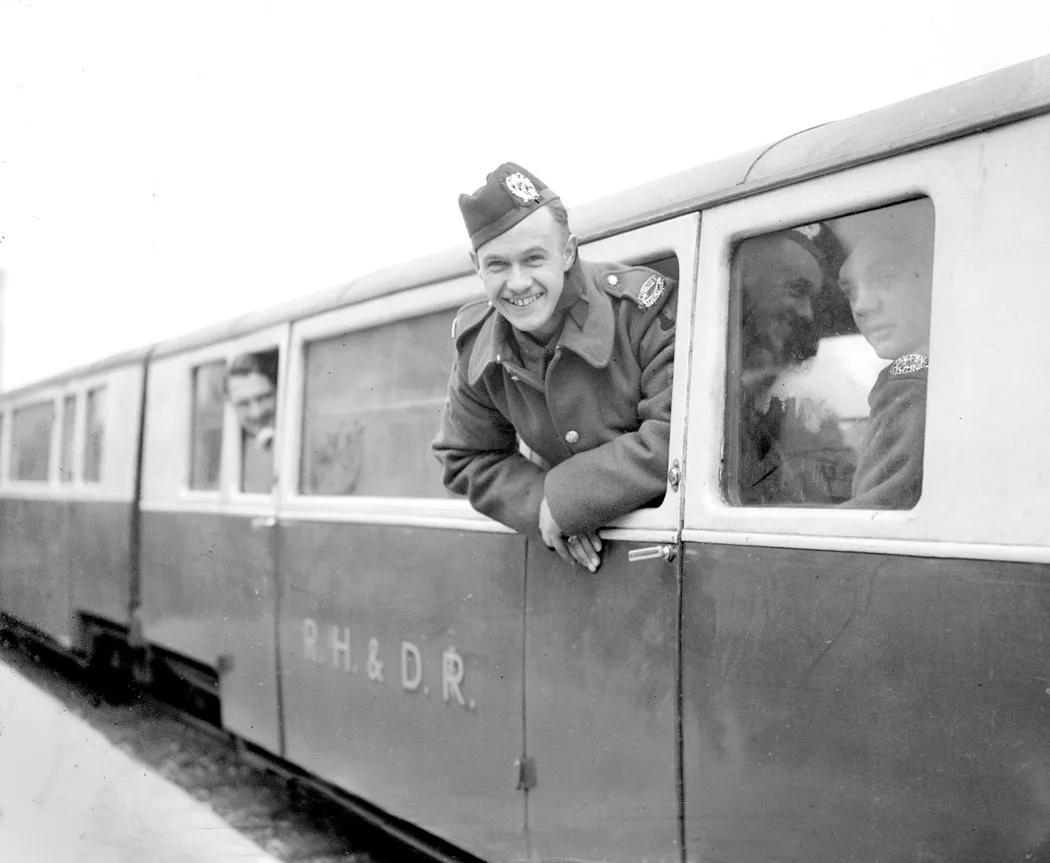Author of new book 'Little Train' Chris Arnot travelled from Devon to Scotland to discover the history of these rail routes, the passengers that travel them, the eccentric characters involved in their conservation, and the beautiful and varied British scenery that the trains pass through.
Here Chris shares his top five narrow-gauge railway journeys:
The Ffestiniog winds its way from Porthmadog, Wales through 13.5 miles of stunning countryside. Waterfalls cascade and streams froth down mossy rock-sides. Swathes of deep green grass soar on one side while valleys dip away spectacularly on the other, affording the chance to look down on tree-tops far below. Sharp bends in the line offer splendid views of the engine as it chugs onward and upward to Blaenau Ffestiniog where there’s a chance to travel on an even smaller train into the bowels of a former slate mine. The slate-waste landscape at the top of the line makes a fascinating contrast with the natural beauties below. www.festrail.co.uk (main image)

The Welsh Highland bills itself as “the longest heritage railway in the UK”. It also starts at Porthmagog but thereafter takes a very different route across the Snowdonia National Park, all the way to the historic walled town of Caernarfon. The 25-mile journey takes the best part of two hours, but you can enjoy a meal and a drink while taking in the usual glut of glorious scenery, including Snowdon itself and the Aberglaslyn Pass, voted “the most beautiful spot in the UK” by the National Trust. There’s plenty of competition in Wales and several more narrow-gauge lines from which to savour the scenery. www.festrail.co.uk

The Ravenglass and Eskdale sets off from the only coastal town in the Lake District National Park and climbs steadily through the sort of Cumbrian idyll that inspired the pen and paintbrush of Alfred Wainwright. England’s highest mountain, Scafell Pike, dominates the horizon while, much closer, are glimpses of nature red in tooth and claw. You may see a buzzard and, if you’re very lucky, a rare red squirrel. Dalegarth Station, at the end of the line, offers walks galore and the chance to see a spectacular waterfall surging down a rock face and into the river below. ravenglass-railway.co.uk
The Bure Valley line starts or ends at Wroxham on the Norfolk Broads, a landscape as different from Cumbria or North Wales as it’s possible to imagine. The train trundles through gently undulating arable land offering occasional glimpses of a scene worthy of Constable. Horses grazing by tree-fringed ponds overlooked by church spires and stone cottages are evidently common to Norfolk as well as neighbouring Suffolk. The railway terminates at Aylsham, a delightful market town harbouring an historic pub, the Black Boys, where Admiral Lord Nelson attended a ball in 1792.

Like many a narrow-gauge railway, the Romney, Hythe and Dymchurch in Kent has a fascinating history. Started by a racing driver from the Roaring ‘20s, the line runs through Kentish marshland and played a key part in transporting troops and supplies to the front line in World War Two. Learn all about it from the museum at New Romney Station. Then get back on the train and prepare for Dungeness – the end of the line and the end of England. Two lighthouses stand side by side on acres of flat shingle, and flocks of exotic birds burst over the expansive skyline of the UK’s only official desert.
Chris Arnot’s Small Island by Little Train is out now by AA publishing